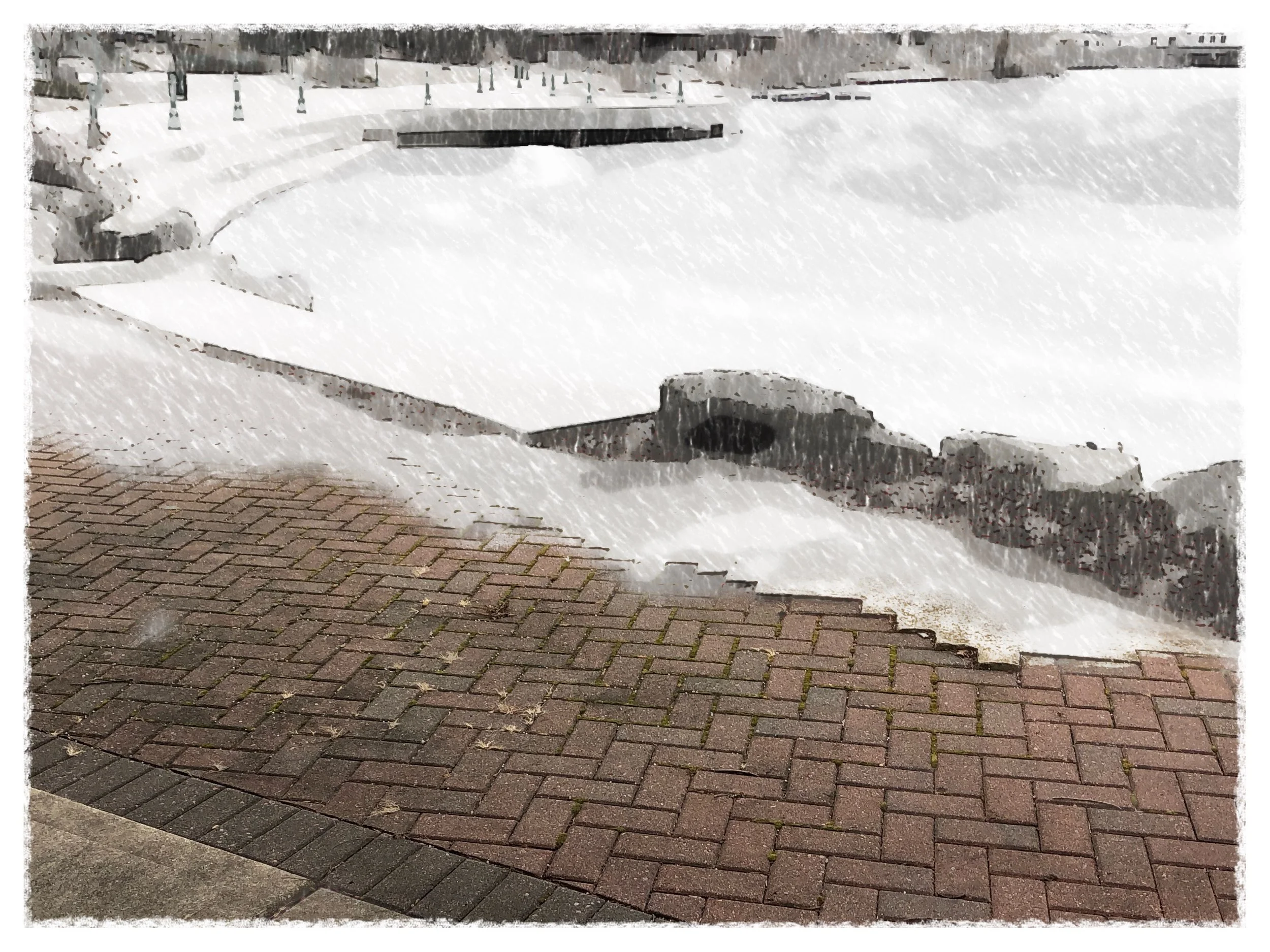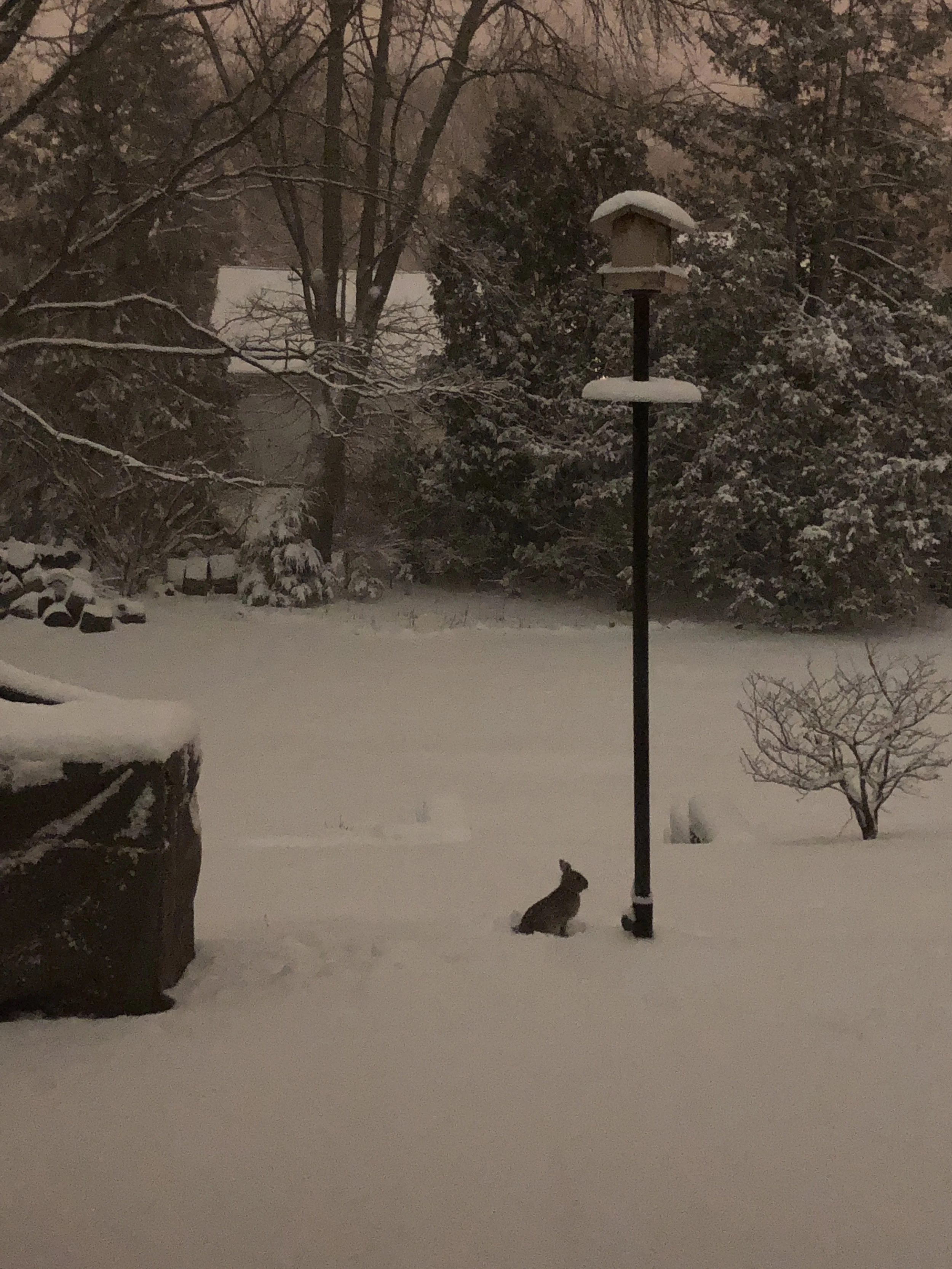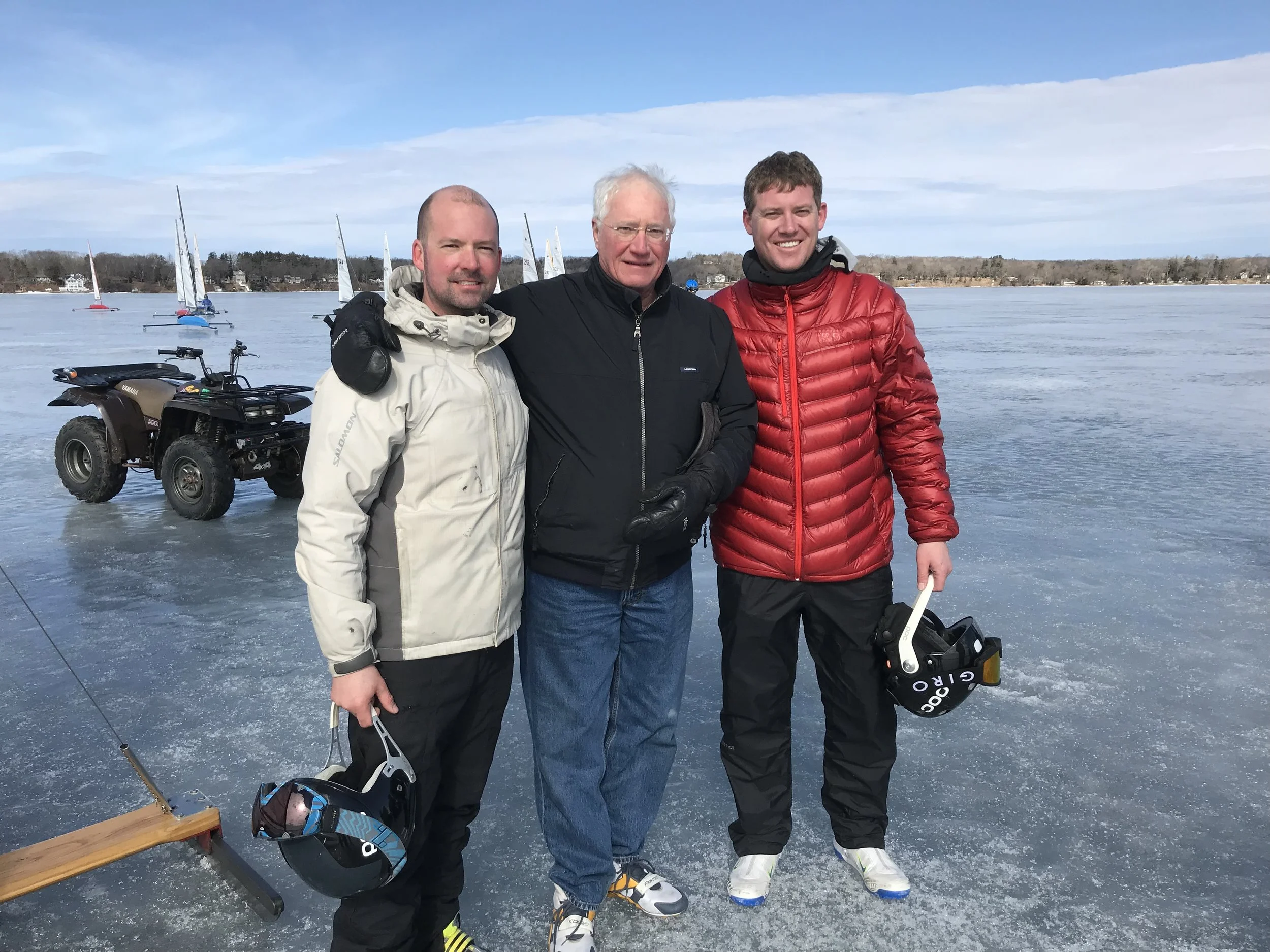Wonderful Weather...
...fabulous food.
Breakfast at Rosita's. Hors d'oeuvre (oysters Rockefeller) by Mary Ellen. Dinner at Los Comales. All good.
...fabulous food.




Breakfast at Rosita's. Hors d'oeuvre (oysters Rockefeller) by Mary Ellen. Dinner at Los Comales. All good.
Rockport is recovering.

Previously

Currently

Currently
134 Palm St. has been brought back into full compliance—even significantly upgraded from pre-Harvey condition. And while a great deal of devastation is still visible around Rockport, it is obvious that a great deal of effort has gone into restoration and recovery. Quite an inspiring example of government, organizations and indivuals working together to accomplish the impossible.
Walked the walk. Dined on the Range (quail and snapper), now some baseball in our lovely hotel room.

Wind backing west to south. Warming.
How is it possible to get tangled up in a bunch of loose ends? Answer unknown, but we will be ready for an early morning departure, no matter what.

Sad at the news of Steven Hawkings passage. Proud of high school students in this country. And delighted about the win in Pennsylvania.
...some heavy, interrupted by an occasional burst of sunshine. Pax and I got thoroughly pelted in one squall, but we made it home without permanent damage.



Culinary Vocab Quiz
(If you can define each term without looking, let me know.)
mirepoix
amuse bouche
charcuterie
chèvre
aioli
crudités
hibachi
falafel
sou vide
escargot
remoulade
kringle
deglaze
risoto
soufflé
kalochky
lefse
schnitzel
tagine
ramekin
tahini
umami
canapé
prosciutto
mandoline
roux
jardiniere
sriracha
spaetzle
bouquet garni
en papillote
chiffonade
ghee
mise en place
gnocchi
foie gras
pho
en brochette
béchamel
beignets
paella
arroz
al dente
antipasto
serviette
...and March weather. (Actually probably better than normal)

One of those days where the hurrier we went, the behinder we got. But then we went to an interesting climate change (global warming) roundtable discussion at the University featuring two quite capable professors and the democratic candidate for U.S. House of Representatives for our 5th district.
Perhaps due to slight time-shift disorientation. The weather teasing—unexpectedly chillier than appearances would suggest. But a good few robins in the garden and back yard—hoping, I think, for something more than faux spring.
We had a fire in the chiminea—accumulated pine cones and birch twigs—and had our traditional sit out on the back patio—until we got too chilled (and a car alarm went off).

Great day to be out of doors. And that's where Pax and I spent a good deal of time. Sunny and windless—slowly warming after a frosty morn.


and debut of the company's first title, Hide & Go Seek-A-Saurus. Large and enthusiastic crowd, good fun for both adults and kids, and, of course, pizza.




Second grade, but first rate. And, prior to the the concert a little time helping out with the boys.

A little dancing

And some narrataion

Ben

James

Both
In other words, lunch with Sally and Glenn and the twins. And on top of that, Renee dressed the boys in identical outfits, just adding to the merriment.


Cloudy, with a cold north wind. Pax and I decided to do a bike/run late in the afternoon and I was about froze solid by the time we made it back home.
...snow loses. The March sun is quite high in the sky and hanging around for a long time. Bad news for snow. Heavy shoveling this morning, but much of last night's accumulation already melted away.

Above is woodpecker shrapnel, chipped out of a sickly maple, just since the snowfall.
In-house projects today, mostly, although conditions outside were pleasant and the walking was not bad.
What wild weather! Pax and I had to choose our paths carefully today to avoid the worst of the cold and violent blast. And now there's snow, creating blizzard-like conditions.
As I look out at the back patio right now I see a small rabbit under the bird feeder, using his head as a shovel to get down to the spilled seed. He seems impervious to the weather.


Photo by Sue
It being the end of the iceboat season, I decided to dig out and slightly update an old writeup of the sport:
~~~~~~~~~~~~~~~~~~~~~~~~~~~~~~~~~~~~
Three of us iceboat sailors were standing in a line, looking out across the lake, to some other race being held by a different class of boat. Quite suddenly, the skipper standing next to me disappeared. We three had been standing along the edge of an ice seam, where some areas can be weaker than others. Taking a step back from the seam, the two of us still standing on either side of our departed friend quickly reached down and pulled him out of the drink.
A quick transition like this from hard water to soft water is just one of the many perils of iceboating. I remember once watching a relatively new boater sail off the edge of the ice. The ice was hard and black, and this guy didn’t notice the difference between it and open water. Since iceboats don’t have brakes, a hard swerve was the best he could manage. Luckily for him, and for those of us who would have had to rescue him, his swerve was enough to keep the boat hooked on the ice by a single runner blade, and the skipper was able to climb, rather than swim, out of the boat.
Another friend of mine, an experienced sailor and successful racer, sailed into a different watery hole twice in the same afternoon. That particular hole was full of slush and thus hard to identify. But why he fell in the second time remains a topic for discussion.
There are actually very few injuries in the sport of iceboating. I once heard about a big boat that got away from its owner, sailed off on its own, and eventually ran over a fisherman, causing considerable damage. A non-iceboating friend once joined me on the ice to observe the sport, and, thanks to my negligence in not providing him with creepers, slipped and shattered his arm. I once watched a skilled sailor fail to react quickly enough to a sharp gust and tip his Nite-class boat up on its side, breaking his mast and cracking a few of his own ribs. Another skilled racing friend once destroyed both his own DN-class boat and a competitor’s by failing to avoid contact between the two, although somehow serious injury was avoided.
Of course, it would be wrong to give the impression that iceboating is nothing but disaster. It’s actually fun some of the time, and there exists a hard-core hard-water group that likes nothing better. One acquaintance has a car sporting a license plate that reads: “I Iceboat.” He lives in a village that bills itself as “The Iceboat Capital of the World.”
Putting things in perspective, there’s an old saying that iceboating is 75% tinkering, 10% bragging, and 15% waiting around for the right conditions. In other words, it’s the world’s most frustrating sport—it requires the simultaneous alignment of four impossible things: ice, an absence of snow, a temperature above 10 degrees F, and sufficient but not life-threatening wind.
Occasionally the stars do align, and then there is nothing like it.
A few years back, an early hard freeze on Crystal Lake left the lake a sheet of two-inch-thick window pane glazing. The ice was too thin to sail on, but because Crystal Lake has a wide shelf extending quite a way out from shore to the drop-off, we did so anyway, staying in the shallows, with the ice flexing dramatically under the boat as it slid almost silently along. We were able to watch fish swim by below, and when we found a muskrat under the glass we were able to follow him all the way back to his den. We did break through once…but the water was only knee deep, and everyone survived.
Sometimes when the whole lake was frozen but free of snow, we would adapt water skiing to hard water conditions, hooking up a tow-rope to the boat and having the kids put on their skates. Since slow in an iceboat is actually fast, when we’d crack the whip, the skier could let go and slide to the far horizon.
Cruising in traditional sailboats is an activity enjoyed by many, and cruising in an iceboat is also a possibility. It can be pleasant given the right conditions, but it is almost never practiced. For all intents and purposes, iceboating is all about racing, which, really, is the only way to tell if you know how to sail.
When racing, a course is set up using two marks, orange nylon pylons, set a mile or more apart along an imaginary line that represents the direction of the wind, with the windward mark directly upwind of the leeward mark. To start, the boats line up behind the leeward mark along a line perpendicular to the course. Skippers stand beside their boats, and when the flag drops, they push them ahead in a sprint, then hop in and trim the sail as quickly and smoothly as possible. From that point on it’s intense concentration mixed with intense exertion for two or three or four laps—many a hard and fast mile to the finish line.
The objective in a race is to make the boat go fast, both upwind and down. To do that the skipper has to find the perfect combination of speed, or footing; and up-course movement, or pointing. He has to play the puffs and take advantage of every wind shift. He has to be aware of all the boats around him, and adhere without fail to the somewhat arcane racing rules. He has to tack at precisely the right time (sailboats cannot go straight up wind), making sure to hit the lay-line and thus not overstand the mark or have to pinch up to get around it.
Rounding the windward mark is something else. The skipper needs to round it at the highest possible speed, preferably hiked up on two runners so that she is sling-shotted down course to the leeward mark. The G-force when rounding the windward mark can be large enough to inhibit breathing (at least temporarily).
Once at the leeward mark (sometimes without the chance to breathe a sigh of relief) she has to make a perfect turn, a smooth turn, rounding the mark without sliding sideways or spinning out, and then, once again quickly pointing as high as up wind as possible, with the sail sheeted in hard.
And all this while lying back almost flat and wearing an assortment of obstructive cold weather gear (balaclava, goggles, helmet, mittens, windproof coat and pants , spiked shoes, etc.) and going 40 or 50 or 60, or more, miles per hour.
Once I’m in the boat and have it moving well on the first upwind leg, I enjoy racing. Everything else in the world drops away and there is nothing but the present. Speed, wind, ice conditions, wind shifts, lay lines, sail trim, the other boats (especially those on starboard tack) all require a significant amount of attention.
Up to now, in spite of obstacles, and over quite a number of races, I have avoided collisions and almost always made it round the marks. One weekend some years ago I actually sailed so many races that by the last one my neck was shot— I could not, try as I might, lift it off the back deck, and I went around the course observing considerably more sky than race course.
Just to be clear, I have won some races. Quite a few, actually, I think, though I can’t remember precisely how many.
Having won races in the past, I sometimes wonder why I’m not driven to win more in the future.
Perhaps because I’m confident that I know how to sail an iceboat, and to make it go fast? Perhaps because I think I don’t need to keep proving myself to myself—or to anyone else for that matter? Perhaps.
So am I done with racing?
Well, maybe not. A day spent out on a lake in sun and wind and cold is a glorious day. There is actually something more than excitement—a sort of wild delight, at sailing four or five inches above the ice, going four or five times faster than the wind. And there’s always the thrill of, perhaps, winning yet another race.
The thing is, when you have an iceboat you are slave to a strange compulsion. As water freezes your freedom of choice diminishes. When conditions are right for iceboating you absolutely must forget everything else. Not taking advantage of something as rare and unlikely as a combination of good wind, good ice, and good competition, is like closing your eyes to a rainbow or giving up all food but tofu.
That’s why when the calendar works itself around to the middle of March I feel a certain relief. My thoughts then can turn to gardening and bike riding, and to getting soft water craft out of dry-dock and ready for launch.
Of course come October I’ll be hoping for a nice hard freeze well before Christmas.
A fun end to the season right at the last of the ice.

Checking the scores.

Fast company.
Bri finished 7th out of 23, just a point and a half out of 5th. Tony had some good races today, but couldn't make up enough ground to get hardware.
...out on the ice. Fluky wind and rapidly softening ice.
Bri is right at the top of the gold fleet—in first place for 5 legs of one race before the wind failed and the gluey ice grabbed him for an instant. Screen shots below the photos. The Nies name seems to be one to be reckoned with.

Registration

Note the number on the block. But for one slight bobble it would have been 3 higher.



When it comes to iceboating you never know. Supposedly the second running of the Nite Nationals will be held tomorrow. Will there be wind? Will the ice be hard enough? Will anyone show up?
Anyway, Nite #10 is set up and might do something tomorrow. Go Wombat.
Back in Whitewater this afternoon, the first robins. I'm not sure robins and racing should be in the same sentence.



Hard to believe.
Mostly cloudy with a cool north wind most of the day, but bright and beautiful before sunset. On our run/ride today Pax and I saw and heard Redwing Blackbirds, and Killdeer. Their arrival seems early, and I wonder what they're noshing on.

I see the moon...
The Nite National Regatta has been called on again (second attempt) for this weekend on Green Lake.
Twins, bike riding with the older kids, dinner, homework.



Several bellwether flocks, heading north.
Weather also good for biking, truck washing, and riding the motorcycle out to Emerson Esker.


High horns, low horns, silence, and finally a pandemonium of trumpets, rattles, croaks, and cries that almost shakes the bog with its nearness, but without yet disclosing whence it comes. At last a glint of sun reveals the approach of a great echelon of birds. On motionless wing they emerge from the lifting mists, sweep a final arc of sky, and settle in clangorous descending spirals to their feeding grounds. A new day has begun on the crane marsh.
Aldo Leopold
Up to 50.
Saw more dogs out being walked today than I've seen in the past three months. Do they all go south for the winter?

Very soggy at the prairie

Pax exploring, in his usual camoflage.

Ice around here not looking good.
I'm recommending the book Pianist in a Bordello, by Mike C. Erickson. Wacky, funny, but ultimately uplifting. (Recommended to me by Katriana.) Good anodyne for these trying times—it's about an honest politian.